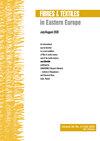Study on the Properties of Plain Cotton Fabric Strength in a Natural Environment for Upcycling Textiles
IF 0.9
4区 工程技术
Q3 MATERIALS SCIENCE, TEXTILES
引用次数: 1
Abstract
Abstract The research primarily aimed to observe the fibre structure of cotton stock fabric through a scanning electron microscope (SEM). Then, textile durability, appearance, and comfort were tested in line with the international standards organization's (ISO) guidelines. For this, the storage time and a series of performance indicators including breaking strength, tensile strength, colour fastness to soap washing, colour fastness to dry rubbing as well as wet rubbing were evaluated, tested and analysed. Finally, through statistically analysing the data obtained, the limit value of the physical performance index and storage time of the fabrics were acquired, and further forming of the upcycling standards of cotton stock fabric. In this study, two cotton fabrics were selected, namely, natural-coloured cotton fabric (width 162 cm, weight 120.8 g/dm2, density 281 / 10 cm × 252 / 10 cm) and black-coloured cotton fabric (width 157 cm, weight 136.1 g/dm2, density 482 / 10 cm × 210 / 10 cm). The research experiments showed that when cotton stock fabrics were stored in a natural environment (temperature 20°C, humidity 65%), as the storage time increased, the surface yarns gradually began to loosen, with some loose yarns appearing on the surface. After 90 days the loosening intensified, and after 270 days the yarn looseness was obvious. After 330 days, a break in the fibrous structure on the surface of the natural-coloured cotton stock fabric could be observed. When natural-coloured cotton stock fabric was stored in a natural environment for 360 days, it lost 4.4% of its warp-breaking strength and 12.56% of its weft-breaking strength. For black cotton stock fabric, the figures were 5.66% and 20.54% for the warp-breaking and weft-breaking strength, respectively.纯棉织物在自然环境中的强力性能研究
摘要本研究的主要目的是通过扫描电子显微镜(SEM)观察棉织物的纤维结构。然后,根据国际标准组织(ISO)的指导方针,对纺织品的耐用性、外观和舒适性进行了测试。为此,对储存时间和一系列性能指标进行了评估、测试和分析,包括断裂强度、拉伸强度、耐皂洗色牢度、耐干摩擦色牢度和耐湿摩擦色牢度。最后,通过对所获得的数据进行统计分析,得出了织物物理性能指标和储存时间的极限值,进一步形成了棉原质织物的上循环标准。在本研究中,选择了两种棉织物,即天然彩色棉织物(宽162cm,重120.8 g/dm2,密度281/10cm×252/10cm)和黑色棉织物(宽度157cm,重136.1 g/dm2、密度482/10cm×210/10cm)。研究实验表明,在自然环境(温度20°C,湿度65%)中储存棉坯布时,随着储存时间的增加,表面纱线逐渐开始松弛,表面出现一些松散的纱线。90天后松解加剧,270天后纱线松解明显。330天后,可以观察到天然彩色棉原料织物表面的纤维结构断裂。天然彩色棉原料织物在自然环境中存放360天,经线断裂强度降低4.4%,纬线断裂强度下降12.56%。黑棉原料织物的经线断裂强度和纬线断裂强度分别为5.66%和20.54%。
本文章由计算机程序翻译,如有差异,请以英文原文为准。
求助全文
约1分钟内获得全文
求助全文
来源期刊

Fibres & Textiles in Eastern Europe
工程技术-材料科学:纺织
CiteScore
1.60
自引率
11.10%
发文量
12
审稿时长
13.5 months
期刊介绍:
FIBRES & TEXTILES in Eastern Europe is a peer reviewed bimonthly scientific journal devoted to current problems of fibre, textile and fibrous products’ science as well as general economic problems of textile industry worldwide. The content of the journal is available online as free open access.
FIBRES & TEXTILES in Eastern Europe constitutes a forum for the exchange of information and the establishment of mutual contact for cooperation between scientific centres, as well as between science and industry.
 求助内容:
求助内容: 应助结果提醒方式:
应助结果提醒方式:


